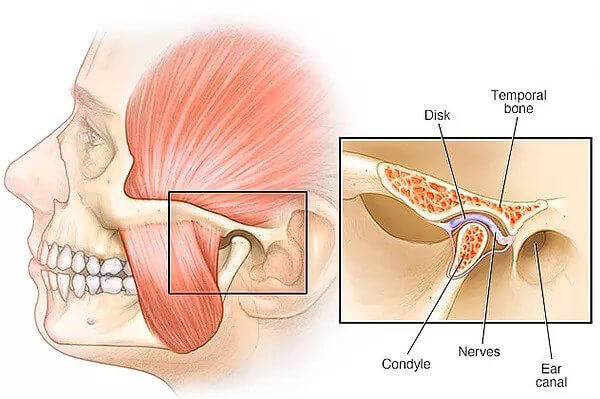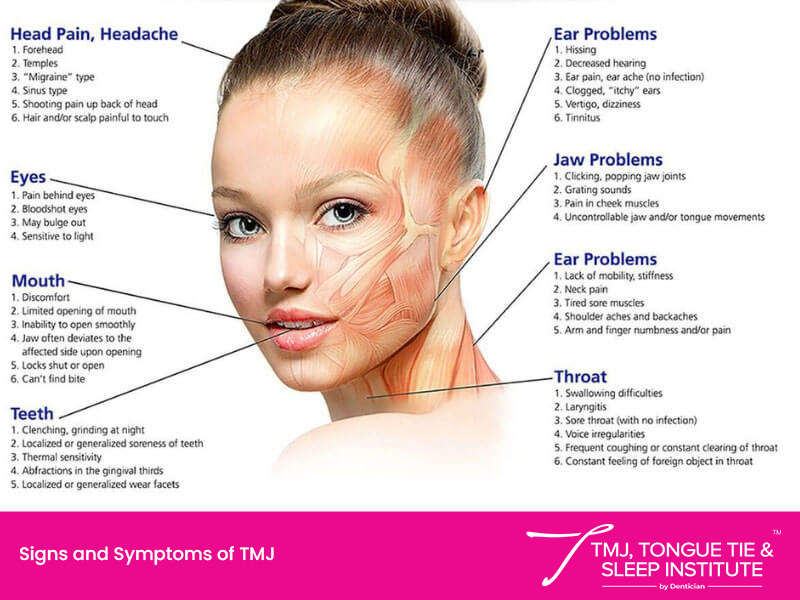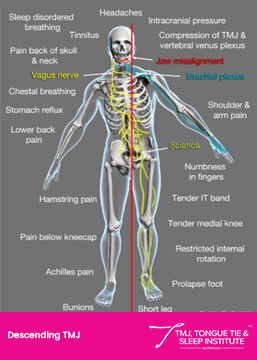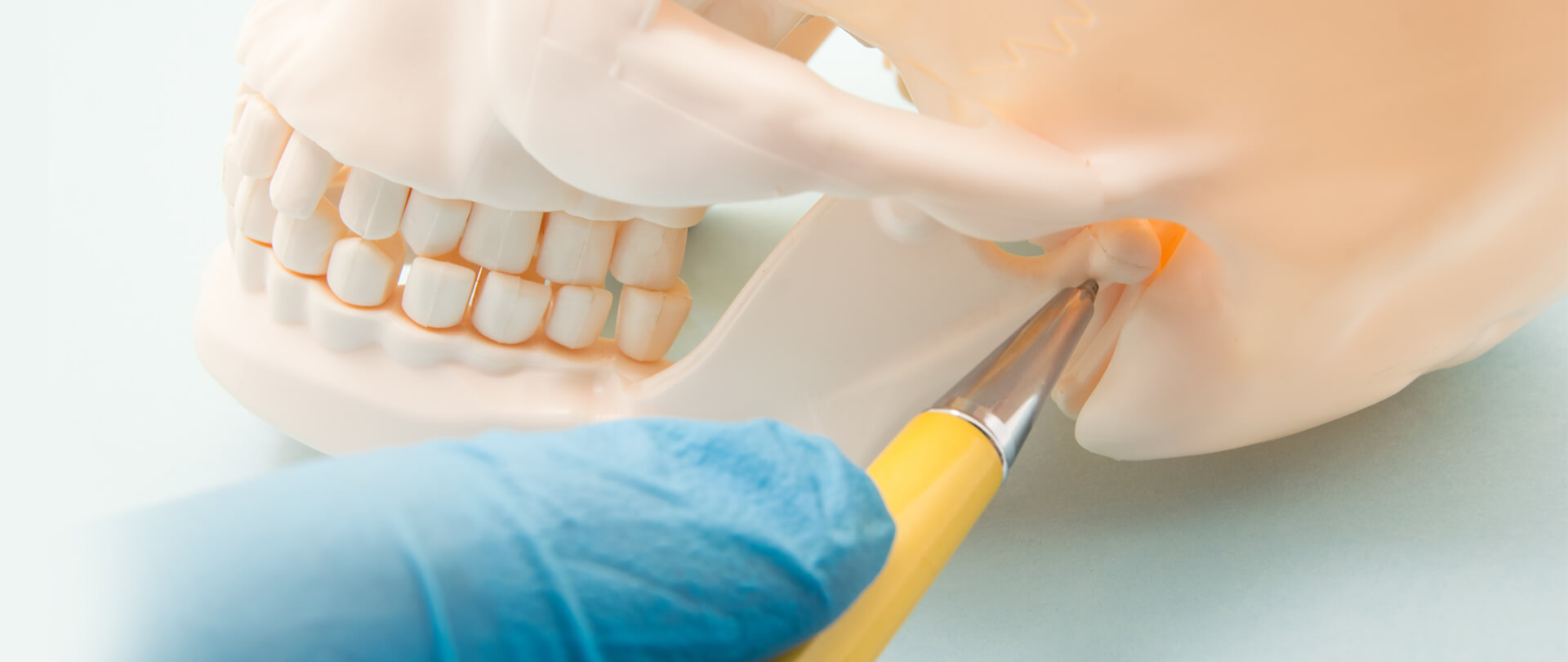What is TMJ/TMD? The Joint & The Disorder
Chronic pain and poor sleep quality have a huge impact on one’s quality of life as they leave you feeling drained and irritable. You might also be less productive at work or may suffer from strained personal relationships. Many conditions can affect your ability to live a pain-free lifestyle and get a good night’s rest one such disorder is the temporo-mandibular joint (TMJ) disorders. Temporomandibular joint disorder (TMJ/TMD) is not a single disorder but a group of painful conditions that affect your jaw joint and chewing muscles. Because the muscles in your face and jaw are intertwined, if your jaw is misaligned, it can lead to a series of problems from your head to your back and beyond.
WHAT IS TMJ?
The Temporo Mandibular Joint (TMJ) in the jaw is one of the most powerful and complex joints in the body. It is located on either side of the face in front of the ears and connects the jawbone to the skull. The joint also has a disc of cartilage that serves as a cushion, and protects the top end of the jaw (condyle) and the socket into the skull from hitting each other. The TMJ is also connected to several nerves like the trigeminal nerve and head and facial muscles, like the pterygoids and masseter muscles.

WHAT IS TMD?
The conditions that affect the TMJ are broadly classified as Temporo Mandibular Joint Disorders (TMD). Nerve, Bone, Cartilage and Muscle structures play an important role in supporting the TMJ. A problem in any of these areas it causes craniofacial/orofacial pain and presents itself in symptoms across the body. TMD disorders may be with or without articular disc reduction.
WHAT ARE THE CAUSES OF TMD?
Physical Injury, Arthritis, Teeth Grinding & Clenching, Mouth Breathing, Malocclusions & Improper Bite, Tongue Ties, Narrow Airways, Obstructive Sleep Apnea and Anxiety & Stress.
Do you have a TMJ Disorder?
Symptoms include migraines, neck & back pain, jaw pain, snoring and sleep apnea. TMJ symptoms may rapidly advance; hence it is best to treat it when the damage to the joint is reversible and the treatment is non-invasive.
THE SYMPTOMS OF TMJ/TMD


When treating TMD patients and explaining all the symptoms, they are oftentimes shocked to hear that the eyes, mouth, throat, ears, jaw, and neck are all associated with TMJ disorder. While some symptoms of Temporo Mandibular Joint Disorder (TMD), such as facial pain and headaches, seem self-explanatory, there are other symptoms that are not as apparent like ringing in their ears, anxiety, vertigo, sleep disorders, or chronic neck and back pain. This is why patients suffering from TMD, at times, may be misdiagnosed with pyschosomatic disorders.
It is important to note that TMD affects overall health and well being, due to the intricate structures involved with this joint.
Temporomandibular Joint Disorder (TMD/ TMJ) can be difficult to diagnose and treat.
Here are some of the non-invasive methods we offer for depending on the causes of TMJ pain / TMD.
Orofacial Pain Relief : This therapy includes massages of the muscles i.e FNFT and Low Level Laser Therapy to relieve non-dental pain inside your mouth, head, face or neck.
Myofunctional therapy : Myofunctional therapy helps treat not only the root cause but also helps establish correct tongue posture, nasal breathing and correct swallowing. It helps by strengthening orofacial muscles and the tongue and is often used alongside other treatment options like GNM Orthotics to treat sleep apnea and airway problems, posture correction, and so on.
GNeuromuscular Orthotics: GNM dentistry is the next level of advancement and uses TMJ splints or mouthpieces, or mouth guards. A customised GNM orthotic appliance is carefully designed for your specific needs to reduce and eventually eliminate discomfort to the teeth, jaws, and muscles of the head, neck & shoulders.
Airway Orthodontics: Airway orthodontics focuses on expanding and bringing the jaw forward to create wider airways to help improve a person’s well-being.
Tongue tie release: The tongue tie procedure involves releasing the fascia to relieve unfavourable compensations of the lower jaw, and TMJ. It also lessens the tension in the mouth’s floor, neck, face and head.
THE SYMPTOMS OF TMJ/TMD
Difficulty chewing or swallowing
Ringing, Tinnitus, Fullness in Ears
Lopsided Jaw Opening
Sensitive Teeth
Pain/Pressure behind the eyes
Tingling/Numbness in Arm
Dry Eyes, Tingling of Eyes
Misaligned Teeth
Dizziness & Vertigo
Neck Pain & Shoulder Stiffness
Limited Jaw Opening
Jaw clicking or Popping
Temporomandibular Joint Disorder (TMD/ TMJ) can be difficult to diagnose and treat,it is crucial to be screened, diagnosed, and treated by a dentist specifically trained and experienced in temporomandibular joint disorders.
Our Non-Invasive Solutions for TMJ Disorder & Jaw Pain:
Blogs























